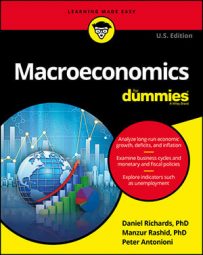Of all the questions in economics, this is likely the biggest. In the early 1900s, Argentina was one of the richest countries in the world, with a per capita gross domestic product (GDP) that was 50 percent higher than Italy's and far above those of Japan and South Korea. A little more than a hundred years later, Argentinian GDP per capita was less than half that of these other countries . . . and Japan's rapid post-WWII growth had pushed it well beyond Italy.
What caused these disparities? How did some countries grow so fast while others foundered? These questions about economic growth are so pressing and so important that the Nobel Prize-winning economist Robert Lucas said, "once one starts to think about them, it is hard to think about anything else."
Macroeconomists aren't obsessed with questions about economic growth because they're obsessed with money and riches in and of themselves. Instead, countries with high incomes tend to have other things that people care about: lower infant mortality, longer life expectancy, better healthcare and education, and so on. In surveys, people in richer countries also tend to report higher levels of life satisfaction. So although being richer isn't the be-all and end-all, it certainly matters. In many poor countries — where large numbers of people live without basic needs such as enough food to eat, a roof over their heads, or basic sanitation — increasing people's incomes is a necessary step towards improving their lives.
In order to become richer, countries need economic growth. An economy is said to grow when the total amount of goods and services that it can produce increases. Economic growth is usually expressed as a percentage change over a year: If the U.S. economy grows by 2 percent this year, that means it can produce 2 percent more "stuff" this year than the year before.
Small differences in growth rates can make a big difference over long periods of time. A very useful approximation in this case is the Rule of 70. This rule says that the number of years it takes for anything to double is equal to 70 divided by the annual growth rate. For example, if an economy grows at 2 percent a year, it takes about 35 years to double in size. But if it's able to increase its growth rate to 3 percent a year, the economy doubles in only 23 years and 4 months.Think what this means. If two economies are the same size now and one grows at 2 percent while the other grows at 3 percent annually, the slower one will double in 35 years and then double again in another 35 years for a four-fold growth overall. Impressive as that is, though, the economy growing at 3 percent will double three times over the same 70 years for an eight-fold increase overall. Hence, it will be twice the size of the slower-growing economy within a single lifetime — all because of 1 percent extra annual growth!
So you can see why finding ways of boosting economic growth (especially in poor countries) is high on the agenda for macroeconomists.

